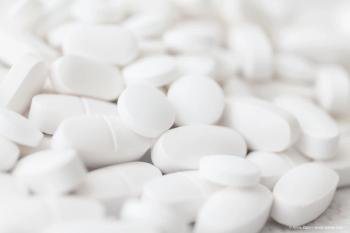
Q&A: Diana Do shares real world insights on aflibercept 8 mg
Diana Do, MD, professor of ophthalmology and vice chair of Clinical Affairs at Stanford University's Byers Eye Institute, presented research on aflibercept 8 mg at the 2025 American Academy of Ophthalmology (AAO) meeting. The comprehensive study explored real-world outcomes for treating neovascular age-related macular degeneration (wet AMD) and diabetic macular oedema. By analyzing over 10,000 eyes, Do and he fellow researchers investigated treatment-naive and prior-treated patient groups, examining injection intervals, vision improvements, and safety profiles of this innovative therapeutic approach.
Note: The following conversation has been lightly edited for clarity.
Ophthalmology Times Europe: What trends did the IRIS Registry reveal regarding the real-world effectiveness of aflibercept 8 mg in patients with nAMD or DME, particularly in terms of visual acuity and treatment durability?
Diana Do, MD: The aim of our study was to look at these real-world outcomes of aflibercept 8 milligrams in both treatment-naive eyes and also prior-treated eyes who had switched from aflibercept 2 milligrams to 8 milligrams. These eyes had to have had neovascular AMD or diabetic macular oedema. We included thousands of eyes in our analysis. What we found was, first in the treatment-naive population, when patients were started on aflibercept 8 milligrams, they could develop a mean injection interval of 12 weeks in both wet AMD or diabetic macular oedema, and this was accompanied by improvement of vision: a 4-letter improvement in wet AMD and a 5-letter improvement in eyes with diabetic macular oedema, especially when their vision started off at 20/50 or worse. The next important cohort is the prior-treated eyes. These are eyes that we switch from 2 milligrams to 8 milligrams, and what we found was switching was beneficial, and that it extended the injection interval by an additional 2 weeks in these eyes, and the vision remained stable. So these are exciting new findings that we're seeing in the real world.
OTE: Were there any notable safety signals or adverse events reported in the registry data, and how do these compare to outcomes seen in controlled clinical trials?
Do: In our analysis of thousands of eyes, we included over 10,000 eyes, we did not see any new safety signals with aflibercept 8 milligrams. The safety profile seems consistent with what we've seen in pivotal clinical trials of both 2 milligrams and 8 milligrams [of aflibercept].
OTE: How might these real-world findings influence treatment decisions, dosing strategies, or patient selection in clinical practice for nAMD and DME?
Do: When we look at big data studies and analyze the use of aflibercept 8 milligrams in 10,000 or more eyes, it gives clinicians confidence that when retina specialists are using it in their real clinical practice, we're able to see those extensions, the extended durability in between treatment intervals. In our database study, it was at least 12 weeks between injection intervals after starting aflibercept 8 milligrams. We see that this is associated with vision benefit in these patients with neovascular AMD or diabetic macular oedema.
OTE: Can you share details from the ELARA research that you are also presenting at AAO 2025?
Do: I had the privilege of presenting new, exciting data on the ELARA clinical trial. Recall that ELARA is an ongoing, multi-center phase 3b study evaluating flexible dosing of aflibercept 8 milligrams in eyes that received prior anti-VEGF treatment for their wet age-related macular degeneration or their diabetic macular oedema. In this study, eyes were treated with monthly aflibercept 8 milligrams up to week 24. Thereafter, they were switched to a treat-and-extend regimen. In our preliminary analysis, we looked at week 24, and we included over 417 eyes. What did we find? We saw that these eyes, who had received prior treatment in the wet AMD cohort, they gained an additional 2.3 letters when switching over to aflibercept 8 milligrams, and this was accompanied by a reduction in retinal thickness of, on average, of 32 microns. For the prior-treated DME eyes, they also gained nearly 3 letters of vision, and they had a reduction of 50 microns in retinal thickness. Of course, when we look at safety, there are no safety signals, and the safety profile of aflibercept 8 milligrams was excellent. The key take-home points were in the ELARA study, we saw that dosing with aflibercept 8 milligrams every 4 weeks in these prior-treated eyes provided benefit and impactful improvements in both vision and reductions in retinal thickness.
Newsletter
Get the essential updates shaping the future of pharma manufacturing and compliance—subscribe today to Pharmaceutical Technology and never miss a breakthrough.













































